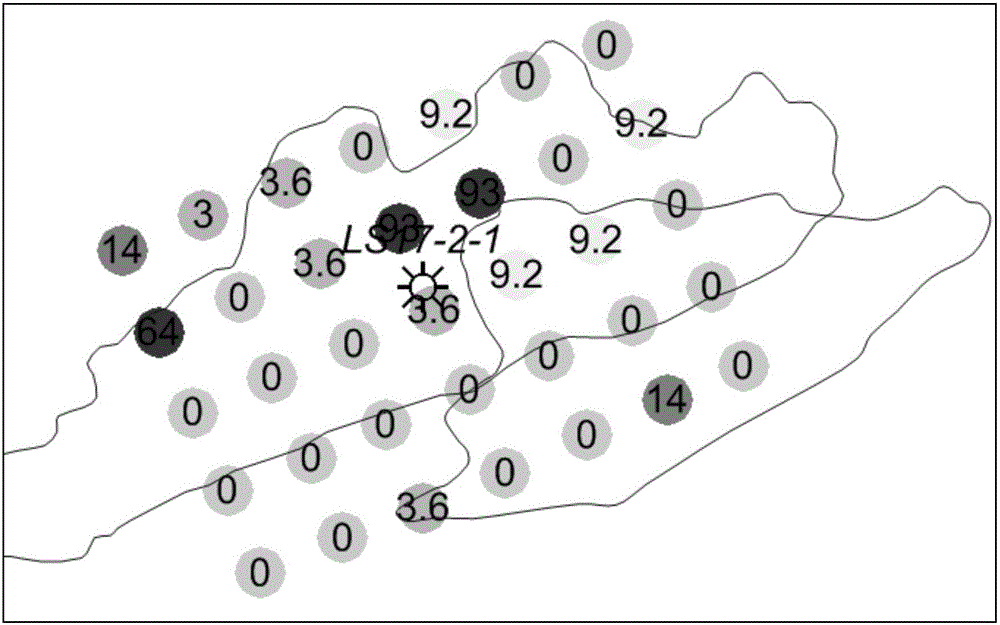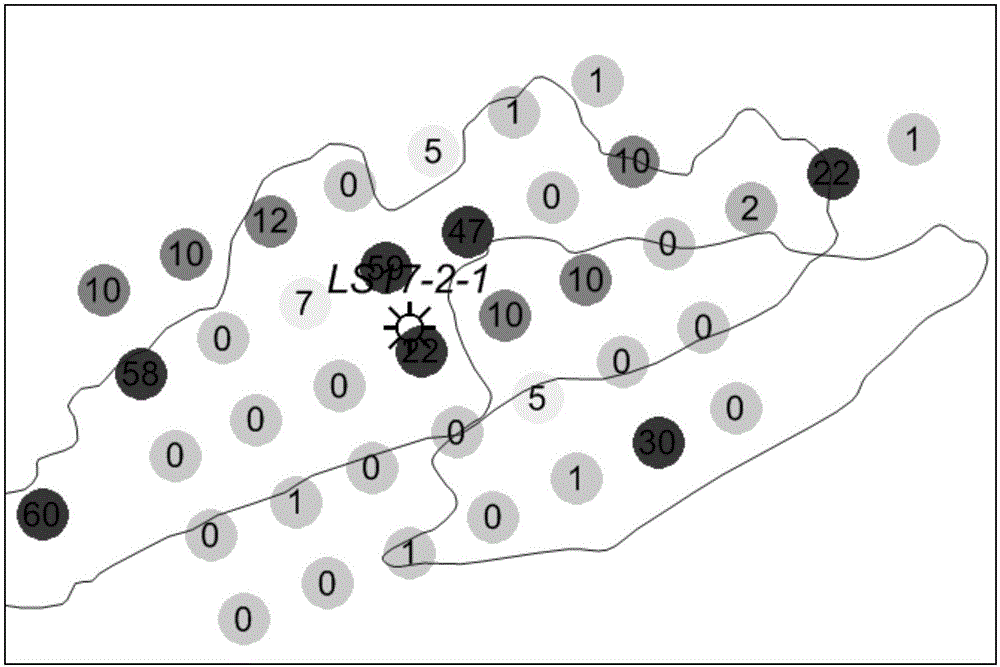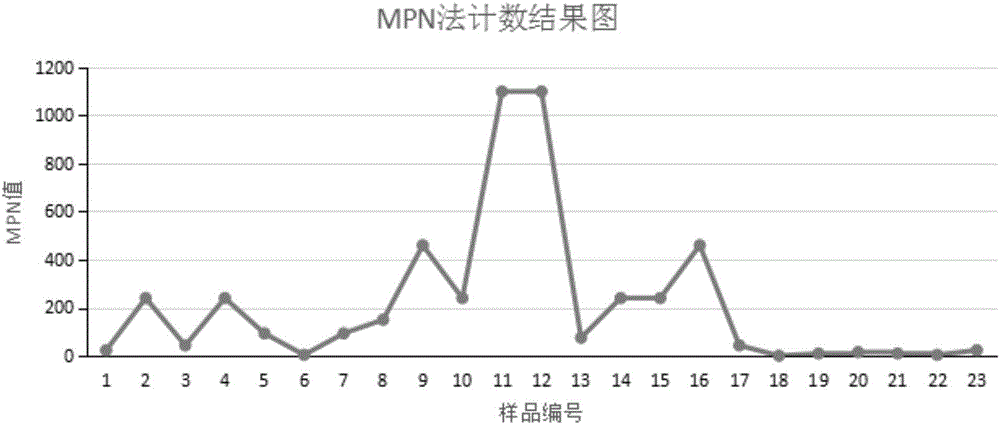Detection and counting method for relative content of microorganism
A technology of relative content and counting method, applied in the field of microbial detection, can solve the problem of low accuracy, achieve the effect of detection accuracy and accuracy, improve comparability, and good data continuity
- Summary
- Abstract
- Description
- Claims
- Application Information
AI Technical Summary
Problems solved by technology
Method used
Image
Examples
Embodiment 1
[0076]The samples in this example were collected above oil and gas traps in a certain sea area, and the hydrocarbon oxidizing bacteria were detected in marine sediments in order to study the development of hydrocarbon oxidizing bacteria above the oil and gas traps in the sea area.
[0077] The specific implementation steps of the method for detecting and counting the relative content of microorganisms of the present invention are as follows:
[0078] 1. According to the trap structure discovered by the geophysical method, sampling points were laid out in a uniform grid, and 42 samples were collected. The sampling interval was 500m, and the sampling depth was 20cm. The samples are quickly frozen after collection, kept frozen and transported to the testing laboratory, where they are stored in a frozen state.
[0079] 2. Weigh 5g of the sample and place it in 20mL of hydrocarbon oxidizing bacteria culture solution, mix well to make the sample stock solution. For the culture medi...
Embodiment 2
[0093] The samples in this example were collected above the oil and gas reservoirs confirmed by drilling in a certain sea area, and the hydrocarbon oxidizing bacteria in the marine sediments were taken to detect the hydrocarbon oxidizing bacteria in order to study the development of hydrocarbon oxidizing bacteria above the oil and gas traps in the sea area.
[0094] The specific implementation steps of the method for detecting and counting the relative content of microorganisms of the present invention are as follows:
[0095] 1. For oil and gas reservoirs confirmed by drilling in a certain sea area, sampling points were arranged in the form of survey lines, and 23 samples were collected, with a sampling interval of 500m and a sampling depth of 20cm. The samples are quickly frozen after collection, kept frozen and transported to the testing laboratory, where they are stored in a frozen state.
[0096] 2. Weigh 5g of the sample and place it in 20mL of hydrocarbon oxidizing bact...
Embodiment 3
[0107] 1. Activate the Acinetobacter isolated from the ocean. The activation steps are as follows: first, separate the strains on the solid culture of marine hydrocarbon-oxidizing bacteria, and then pick a single colony and inoculate it on the liquid culture medium of marine hydrocarbon-oxidizing bacteria. Enrichment culture.
[0108] 2. Dilute the enriched and cultured Acinetobacter with sterile water to prepare a series of 15 different concentrations of Acinetobacter dilutions, and use a hemocytometer under a microscope to count the number of cells in this series of different concentrations of bacteria. The concentration of this series of 15 Acinetobacter dilutions with different concentrations can be obtained, expressed in units / mL.
[0109] 3. Pipette 1mL of the Acinetobacter solution in step 2 into 9mL of sterilized culture solution, and mix well to make a small dilution culture solution. Then take 1mL from the small dilution culture solution into another 9mL sterilized ...
PUM
 Login to View More
Login to View More Abstract
Description
Claims
Application Information
 Login to View More
Login to View More - R&D
- Intellectual Property
- Life Sciences
- Materials
- Tech Scout
- Unparalleled Data Quality
- Higher Quality Content
- 60% Fewer Hallucinations
Browse by: Latest US Patents, China's latest patents, Technical Efficacy Thesaurus, Application Domain, Technology Topic, Popular Technical Reports.
© 2025 PatSnap. All rights reserved.Legal|Privacy policy|Modern Slavery Act Transparency Statement|Sitemap|About US| Contact US: help@patsnap.com



